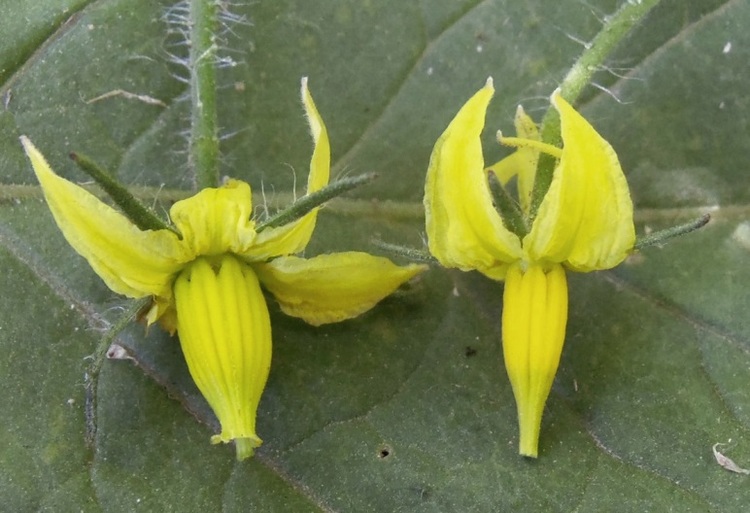You just get them to believe if they don't stop, they'll go blind.
If they're teenagers that won't help, I remember thinking it was a risk worth taking.
Welcome to Religious Forums, a friendly forum to discuss all religions in a friendly surrounding.
Your voice is missing! You will need to register to get access to the following site features:We hope to see you as a part of our community soon!
You just get them to believe if they don't stop, they'll go blind.
Think of it as the first to get there is a winner.I understand that but what I'm wondering is how they ensure a cross when selective breeding.
I am still reading, but they may remove the anther. The yellow interior parts of the flower. They surround the pistil. If the anther is removed then fertilization has to come from an outside source. Perhaps akin to tasseling corn.Interesting but doesn't really explain how he stops the self pollination.

Okay! It took a while Most articles in the search tell you how to increase self pollination. But to avoid it you do what I suggested. You remove the anthers (sort of like giving students a test with a lisp),
https://tgrc.ucdavis.edu/Guidelines_Emasculating_and_Pollinating_Tomatoes.pdf
That title makes me wince.
Breeding for special traits is a lot of work. The same is done in fields where they are growing seed corn. At a certain time in the growing season a horde of (usually college students) will walk down the rows cutting off the tassels of corn plants. Sort of like a mass castration for those plants, only the female parts are left and they have to get their pollen from a limited source.Seems like a lot of work
Breeding for special traits is a lot of work. The same is done in fields where they are growing seed corn. At a certain time in the growing season a horde of (usually college students) will walk down the rows cutting off the tassels of corn plants. Sort of like a mass castration for those plants, only the female parts are left and they have to get their pollen from a limited source.
When it comes to tomatoes most of the articles are on how to get them to self pollinate more so that they make more tomatoes.
It appears from the little reading that I have done that crosses within species are easy, and in fact the articles tell how to avoid that. Where crosses between species does not tend to happen. If you cross with a species a hybrid then could be a "new variety". You would then need to isolate that one and see if you liked its traits or not.I can't really find anything on beans and peas other than work on new varieties being developed because of increased demand due to covid. They don't go into details on the actual process.
It appears from the little reading that I have done that crosses within species are easy, and in fact the articles tell how to avoid that. Where crosses between species does not tend to happen. If you cross with a species a hybrid then could be a "new variety". You would then need to isolate that one and see if you liked its traits or not.
And I have the cure from personal experience to getting more corn. Plant a bigger garden. In fact the heifers that we took care of every year for another farmer taught us an important lesson one year. If something eats a whole row of corn, but thankfully leaves the rest behind, and it is not too late in the season, you can plant again and enjoy fresh sweet corn for a longer period of time.
Perhaps for you. Nature does not seem to want to go along with your wishes.More ears per plant would be easier.
And when it comes to corn, two is above average. Usually a plant only grows one. But if the conditions are optimal. If it is not surrounded by a field of corn, you may get more than one.And I wish they'd work on a corn stalk that produces more than 2 ears. Corn takes up a lot of room in a backyard garden for not much return.
Perhaps for you. Nature does not seem to want to go along with your wishes.
At any rate after the heifers ate part of our corn every year after that we would plant a row of corn. A week later another one. A week later another. We liked our corn on the cob.
And when it comes to corn, two is above average. Usually a plant only grows one. But if the conditions are optimal. If it is not surrounded by a field of corn, you may get more than one.
How Many Ears?
It has been over 40 years since my corn growing days. But some things have not changed. Our garden started out small. It was just a patch in front of a shed. Then it grew until it was more on the right side of the shed than in front of it. Then it grew some more and began to invade the field that the shed was by. By the time my dad sold the farm we had a ton of vegetables. As kids we would get extra money by selling what we did not need at local farmer's markets. Store bought vegetables were sneered at. We had to be desperate to buy some of those.
I believe you. The "one per stalk" rule usually applies in corn fields where the plants are very close to each other. Have you ever walked through a cornfield?I usually get 2.
I believe you. The "one per stalk" rule usually applies in corn fields where the plants are very close to each other. Have you ever walked through a cornfield?
Then you know from personal experience how densely packed full of plants it can be.I have many times but it was cow corn not sweet corn. We used to grow it on the dairy for feed. I've tried to erase shucking dried corn by hand from my brain.
Self pollination is a sin.
